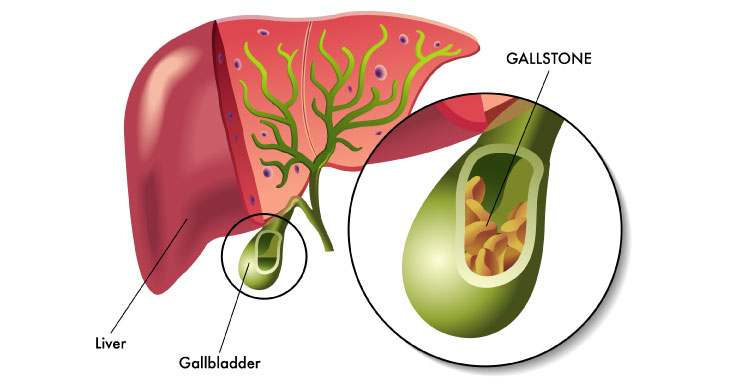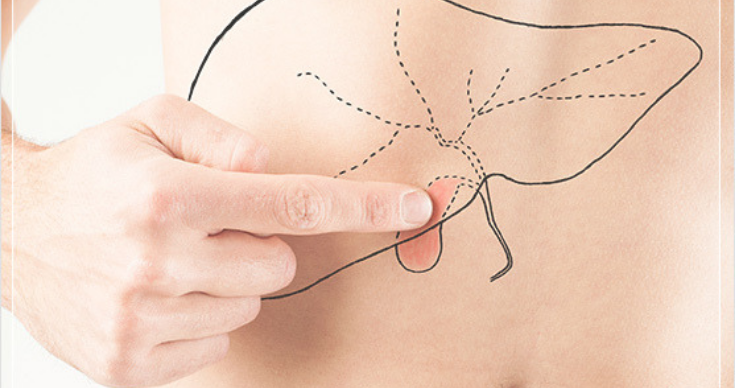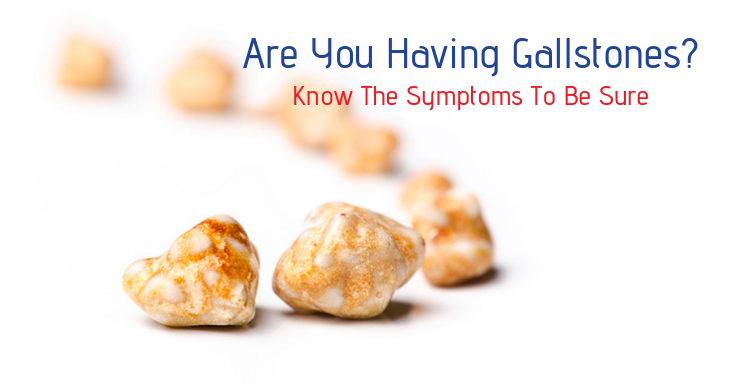A Brief Introduction To Gallstones And Gallstone Surgery
The gallbladder is a pear-shaped organ, located in the upper right side of the abdomen, right under the liver. It secretes bile juice, which helps in digestion. When this digestive enzyme solidifies, it forms hard, gallstones. Gallstones are of 2 types, cholesterol stones (when too much cholesterol is present in the bile) and pigment stones (when too much bilirubin is present in the bile). It is becoming very common these days and thus, a lot of hospitals are offering gallbladder stone surgery. Let’s understand some important aspects of the same, in details.
Symptoms Of Gallstones
Gallstones can arise in any number or size. Thus, the exact symptoms vary greatly from person to person. Many a time, gallstones might not project any symptoms at all (known as silent gallstones). However, the most common symptoms of gallstones are as follows and can persist anywhere between a few minutes to a few hours-
- Intense pain in the middle abdomen
- Pain in the right upper abdomen
- Pain in the right shoulder or between shoulder blades
- Nausea and vomiting
Though these symptoms can arise due to other conditions as well, if it persists for more than 2-3 weeks, it is best to get it evaluated to know the exact reason.
Causes Of Gallstones
Gallstones can happen to anyone. But few risk factors uplift the chances very much. These include-
- Having a family history of gallstones
- Having a personal history of gallstones
- Being overweight or obese
- Being pregnant
- Being 40 years or more
- Being female
- Being on a crash diet for weight loss
- Eating too spicy/oily food
- Eating a low-fiber diet
- Leading a sedentary lifestyle
- Having high cholesterol
- Having liver diseases
- Having diabetes
- Losing weight rapidly
- Taking medicines containing estrogen (like oral contraceptives)
It is important to evaluate oneself whether or not they are at risk of having gallstones. As a preventive measure, losing weight slowly, maintaining healthy body weight, and leading a healthy lifestyle is helpful to reduce the chances of the same.
What Is The Treatment For Gallstones?
If gallstones are left untreated, these can lead to complications such as inflammation of the gallbladder, blockage of common bile duct/ pancreatic bile duct and rarely gallbladder cancer. Thus, it is crucial to seek treatment for it, on time.
Gallstones can be treated by oral medication, shock wave lithotripsy and gallbladder stone surgery. Oral medical and litho stock therapy removes the stones by dislodging them, but often it takes many years to treat it completely if there are many gallstones. Moreover, once the therapy or the medication stops, the gallstones recur and for some people, the therapy or medicines simply don’t work.
Thus gallbladder surgery often remains the only option to treat gallstones permanently. In this surgery, the gallbladder is removed altogether so that gallstone can never recur in the future. These days, many doctors offer laparoscopic gallstone surgery, which removes the gallstones (along with the gallbladder, if needed) through few minute incisions and thus offers many advantages over open gallstone surgery.
The suitable method of treatment is determined by the doctor, depending upon your symptoms, complication, and compatibility. Come at ILS Hospitals for consultation and to get safe and effective gallbladder stone surgery from highly skilled GI surgeons.
Do You Need A Gallbladder Surgery To Cure Your Gallstones?
Your occasional stomach pain and digestion troubles not resolving even with home remedies and over-the-counter medicines? Are you certain it is not your gallstones? Knowing the symptoms of the gallstones help with an early detection and thereby a timely treatment. Few patients do not even realize the presence of the gallstones unless they block the path of bile, triggering ‘gallstone attack’ and cause unbearable, sharp pain. To avoid any such trauma and complications, it is advised to undergo timely, elective gallbladder surgery, also known as a cholecystectomy.
8 out of 10 patients with underlying gallstones need to undergo cholecystectomy either as an elective or emergency procedure. Those who might never need any surgical cure have what is called the ‘silent gallstones’ and can manage it and have a normal life with mild medication and lifestyle change. However, those who are experiencing any symptoms of the same, are always advised to avail the surgery.
The gallstone surgery can be done either by open or by laparoscopic surgery technique. The procedure is finalized by having multiple diagnostic screenings. These include blood tests, MRI (HIDA), ultrasound scan and endoscopy. After this thorough evaluation, the doctor finalizes the surgery mode. Here we present a brief description of them both. In both the procedures, often the gallbladder is removed altogether to mitigate the possibilities of its recurrence of the gallstones in the future.
Open surgery – The surgery is carried out through 5-8 inch incision made near the site. After the procedure, the incision is again stitched up. Now, it is suggested only for those who have some severe gallbladder complication or are in their 3rd-trimester pregnancy.
Laparoscopic surgery – It is also known as minimally invasive surgery or keyhole surgery and is carried out through 4-5 minute incisions and with the help of the modern instruments. These include laparoscope, camera, cold light source, and many other assisting instruments. A well-experienced surgeon operates effectively with the assistance of this advanced surgery and offers multiple benefits to the patients. These include much lesser operative and postoperative infection, bleeding, pain and recovery time.
ILS Hospitals, being a pioneer of laparoscopic surgery in eastern India, offers this advanced surgical technique for the people suffering from gallstones. However, open gallbladder surgery is also offered for patients with complications. In case, you or any of your loved ones is suffering the pain of the same, come down to ILS Hospitals to resolve it for once and all.
Are You Having Gallstones? Know the Symptoms to be Sure
Do you experience episodes of abdominal pain from time to time? Are you also experiencing persistent digestive issues that won’t resolve with diet changes? Chances are high that you are suffering from gallstones. In case you are ruling out the possibility of the same, remember, most of the patients later going for gallbladder stone surgery admitted to experience no symptoms for a long period of time. Let’s discuss what gallstones are along with some of the warning signs of gallstones.
The gallbladder is a small organ located beneath the liver and it secretes digestive enzymes that facilitate digestion. It is called the bile. When it concentrates into hardened mass, it becomes what we call the gallstones. It can either occur as one large stone or several small ones. The size of the same ranges from sand granule to as big as a golf ball.
There are some ‘silent gallstones’ that have no symptoms associated with it and often does not require any treatment either. Check out for the following warnings of gallstones that indicates you might need to consider a gallbladder stone surgery later on.
-
A sharp pain for a brief period, which often is called an ‘attack’, is the most prominent symptoms of an underlying condition of gallstone.
-
These episodes can be separated by some period of times. It can range anywhere between days, weeks, months or even years.
-
Though the pain might onset unannounced at any time, it has often been found to onset after 30-40 minutes after consuming a highly processed junk food.
-
This pain usually starts very mild but slowly turns severe. It stays constant for some time, which can last anywhere between 1 to 6 hours.
-
The pain usually originates in the abdomen, which may later move to the right shoulder or back. It usually sets during late night and the sharp pain may even wake a person right away.
-
The digestion associated symptoms such as nausea, vomiting, bloating, indigestion, etc. are often seen in patients with gallstones.
-
Symptoms like jaundice, fever and persistent severe pain need to be addressed immediately as it might indicate a blocked duct due to the accumulation of gallstones.
Unfortunately, gallstones are often recurring in nature. Those with a history of the same is highly susceptible to have it again in the future. Thus, it is always recommended to seek consultation before and after a gallbladder stone surgery to take measures against it.
5 Most Common Outpatient Surgery Procedures
In several accounts of treatment, the patient needs a surgical assistance rather than a medicinal one. At first, due to several medical reasons, most of the surgeries were executed on inpatient basis only. These days, however, several hospitals in Kolkata execute numerous outpatient surgical procedures as well.
Let’s have a glimpse of the most common outpatient surgical procedures that are being carried out in hospitals of Kolkata-
1. Cataract Surgery
Cataract is a condition of eye when the natural lens of the eye gets cloudy and needs replacement with an artificial one. It is one of the most common surgical procedures performed in hospitals. The success rate is flying high and with very less room for error and other discomfort.
![]()
2. Minor Joint Repairs
Bone breakage can be an inpatient procedure as well, depending on the severity. Though most of the minor surgical procedure including tendon replacement and meniscus surgical correction are done on an outpatient basis, most of these treatments are availed by sports persons.
![]()
3. Cholecystectomy
More commonly known as gallbladder removal, it is a surgical procedure for removal of gallbladder. This procedure is executed in case of gallbladder stones and any other severe condition of the gallbladder. This procedure is outpatient mainly when executed through laparoscopic approach.

4. Skin Therapy and Grafting
Skin surgical procedures such as correction of wrinkles, sagging skin, acne scars and many other similar aesthetic procedures are often done on an outpatient basis.
![]()
5. Abdominal Hernia Correction
Hernia is a condition in which a portion of the internal fat or tissue pushes out through the outer skin. This needs surgical correction to fix the problem permanently. Earlier, these were carried out through open surgery, thus the patient needed to stay for a couple of days in the hospital. These procedures are mostly done on outpatient basis.
![]()
Even though almost in each of these, the patient is allowed to go home from the hospital on the same day as the procedure, it is subjected to the overall health condition of the individual and as per the recommendation of the doctor. In case the doctor finds it best for the patient to stay overnight, it must be carried out without any protest.
Also, an outpatient and his family members are advised to take proper care and to watch out for any discrepancies. In case any trouble arises, the concerned medical staff must be consulted and if necessary, the patient must be taken back to the healthcare facility for help.
Why Taking Care of Surgical Wound is Essential and How to Do it?
In today’s disease-stricken world, every individual undergoes at least one surgery in his lifetime. Some have to make round trips to the operation theaters multiple times in their lifetime for the surgical treatment for diseases of several domains.
The surgical wounds are the spots on the body where the incisions are made to carry out the surgery. Hospitals these days use the laparoscopic surgery to minimize the area required to make the surgical cut. But no matter the size of the wound, infection can still be imminent, if proper care is not practiced.
The skin starts to heal on its own within a day or two post operation. This varies from person to person depending on the overall health condition and type of surgical procedure. Closing the cut with clips or stitches enhances the healing process significantly.

The size and the sensitivity of the incision depends upon the type of disease and its surgery. The wound can be closed either with clips, stitches or surgical glue, depending upon the size, location and the intensity of the bonding needed by the cut.
In case the surgery was a minor one and the doctors have used surgical glue, it is the best alternative one can imagine. In case, it is the dissolvable stitches, the work of patient becomes comparatively easy. But in case it is the non-dissolvable stitches, clips or staples, much more caution and care is needed to ensure sterility. Clips, stapler and stitches are removed by the doctor or a skilled nurse after 3 to 15 days after the surgical procedure.
What to do to ensure everything is alright?
Keeping the wound covered all the times ensures that the wound does not get contaminated with environmental pathogens. A covered wound is likely to heal three times quicker as compared to uncovered wounds. Use of antibiotic cream is also recommended, this further diminishes the risk of infection up to 18 percent.
Keeping the wound out of any contact with water is very vital, especially for the first 24 hours. Usually dressing for a major surgery is usually recommended to carry out by a professional. However, sometimes the patient himself might need to address it personally.
Removing any fluid coming out of the wound and keeping it dry is the optimal condition for healing. It reduces the overall risk of infection. Sometimes, exerting some pressure to the wound might also be needed to keep the stitch intact.













